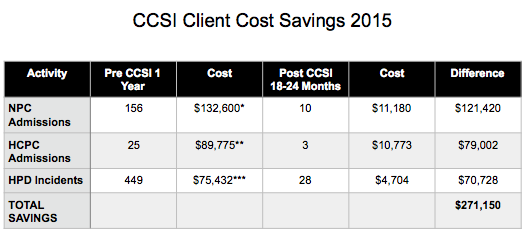New White House initiative utilizes data to improve policing nationwide

Last month, the White House announced the Data-Driven Justice Initiative (DDJ), a new effort to curb the financial and societal costs of mass incarceration through evidence-based solutions. The initiative has brought together 67 local governments committed to implementing policies backed by data with the goal of diverting low-level offenders with mental illness away from the criminal justice system, as well as reducing the number of low-risk offenders in jail awaiting trial.
The move mirrors the Bureau of Justice Assistance Justice Reinvestment Initiative (JRI) in some ways, which we wrote about last year. The DDJ extends the values of using data to improve policy to the state, county and municipal levels, partnering with jurisdictions ranging from Los Angeles County to the city of Albany, N.Y.
In this vein, DDJ’s focus is both granular and more expansive. On the local level, for example, the Albany Police Department will partner with BetaGov to test innovative training strategies for officers in collaboration with local mental health resources. They will focus on crisis intervention, a policing technique that helps law enforcement cope with difficult calls for service, and increase safety in situations involving potentially unstable individuals. Similarly, other organizations like Code for America and GovLab have spearheaded efforts to use criminal justice data in innovative ways.
Crisis intervention policies and training are vital for diverting individuals with mental illness away from the criminal justice system when they find themselves interacting with law enforcement. By learning how to identify the signs of mental health issues in lower-risk cases, officers can increase the safety of their communities while simultaneously decreasing the burden on the criminal justice system by helping offenders seek treatment.
Data is critical to understanding the impact of these efforts. The Houston Police Department Mental Health Division’s annual report reveals how data surrounding crisis intervention policies can be analyzed and measured. Last year’s numbers show a decrease in direct bookings and an increase in jail diversions from previous years, perhaps suggesting a progressive shift in the way individuals with mental illness are being handled by the city’s officers. While statistics certainly don’t tell the whole story, data — especially when bolstered by a thorough analysis — can give policymakers empirical insights into which strategies produce tangible outcomes.

Furthermore, data are helpful in analyzing the cost savings of implementing evidence-based policy. Data suggest that the department’s Chronic Consumer Stabilization Initiative, which is centered on addressing the needs of mentally ill individuals who frequently interact with the criminal justice system, has saved the city hundreds of thousands in costs.

On the national scale, DDJ’s coalition will also engage in addressing widespread issues like homelessness and the criminal justice system writ large. Through DDJ, the National Law Center on Homelessness and Poverty plans to facilitate a Working Group on Housing that will be open to all DDJ communities to provide training on policy related to these issues.
Similarly, data helps the city of Houston understand the impact of alternative approaches to addressing homelessness. Because the vast majority of homeless individuals who come into contact with law enforcement have not committed a crime, specialized approaches focused on diverting them from entry into the criminal justice system can be extremely beneficial to both the city’s overall public safety as well as its budget. The data show that the department’s Homeless Outreach Team saves the city over $4 million a year by committing resources to serving and housing the homeless.

Perhaps the most appealing aspect of JRI when it was launched in 2010 was the idea that efficiency achieved through data-driven policy will allow further reinvestment into other areas of greater need. We encourage DDJ — an effort with similar data-driven goals — to be transparent about the outcomes of its efforts so that this initiative might spur criminal justice agencies around the country to reevaluate the effectiveness of their current policies and examine the possibility that evidence-based alternatives can save money and improve lives.

